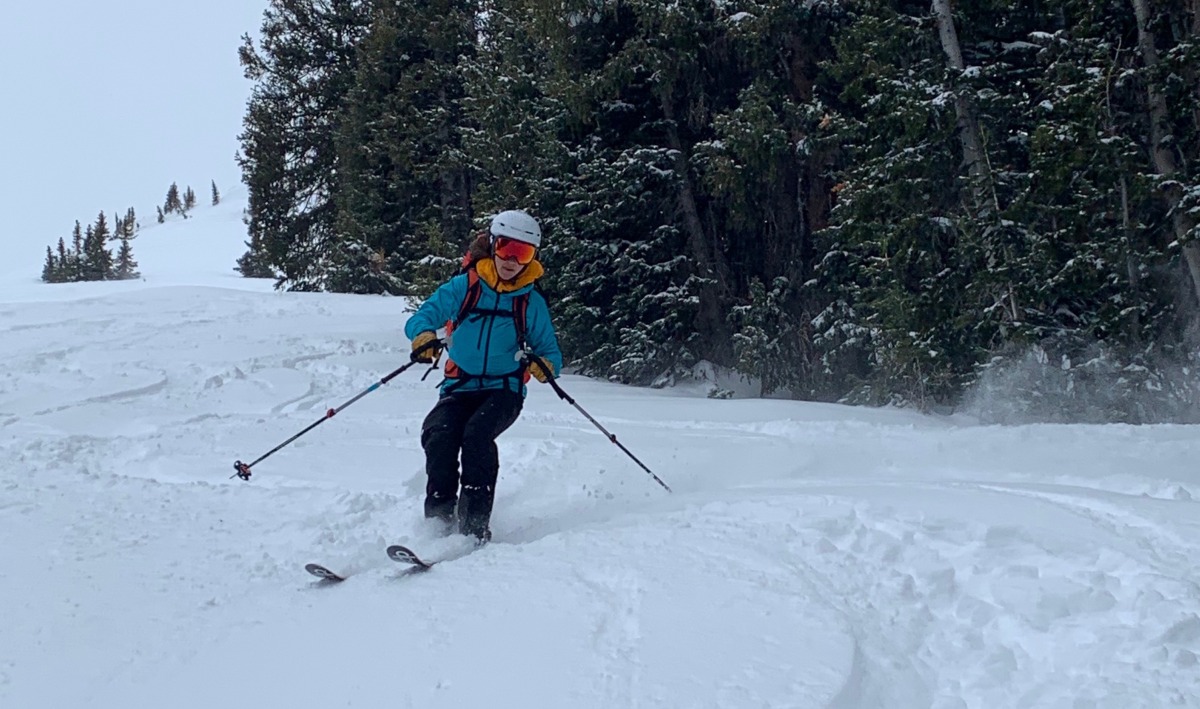
The Sweet Protection Ascender helmet with the brand’s Clockwork goggles make for nice ski touring combo.
Review of the triple certified ski mountaineering helmet with MIPS
The effectiveness of ski helmets has been a topic of debate on this site though I’ll say plainly that I’m a big fan. Judging by the growing influx of lighter touring oriented options popping up in ski shops, it seems manufacturers and consumers are, too. Ski mountaineering helmets have a particularly tough trifecta of tasks: vent well enough to be worn on the up, protect well enough to be worn on the down and light enough to not get tossed back in the car at the trailhead. Enter Sweet Protection’s new Ascender helmet with MIPS.
For the past several years I, like many ski tourers and mountaineers I know, have been using a climbing helmet for all sports: climbing, skiing, mountaineering and every combination therein. My go-to is the BD Vector helmet because it is light, easy to adjust, and versatile (similar to the Vapor we reviewed on this site. I’ve been resistant to get an actual ski certified helmet because why get another piece of gear if I don’t really need it? But the climbing helmet is just that: a skull bucket designed to protect the head against impacts primarily in the form of falling objects. Speed, velocity and other forces encountered in skiing aren’t necessarily accounted for.
The Ascender is a triple certified ski mountaineering helmet, meaning it’s certified for alpine skiing in the U.S. and Europe as well as certified for mountaineering. It checks a variety of boxes in terms of field of vision, resistance to penetration, shock absorption, and more (see here for a full breakdown of certifications). It’s one of the few sport specific helmets that offer that range of regulated credibility.
Sweet Protection is a Norwegian company that’s been in the business of head and body protection since 1988. They are veritable engineers of protective equipment for skiing, biking, whitewater and more, though I had no familiarity with their ski helmets until I received mine in late November. Here’s my take on the Ascender.
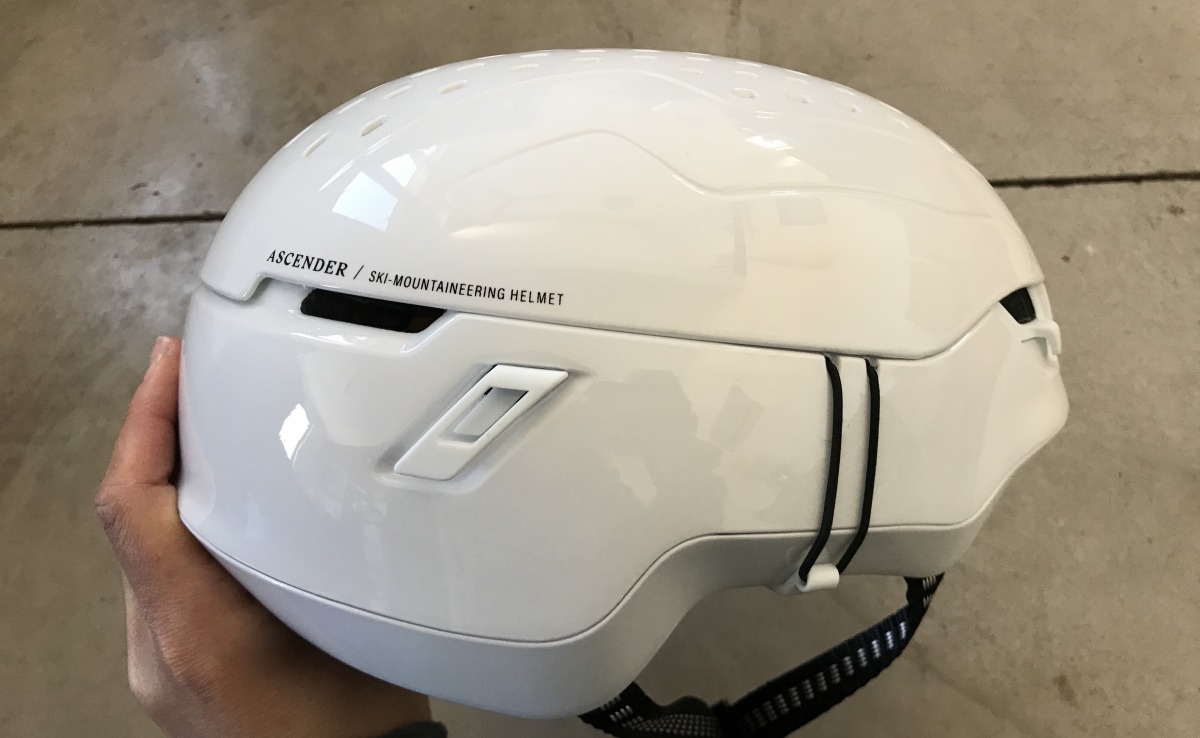
Side view of the Ascender, with headlamp clips as well as a soft bungee. I got several compliments from fellow ski tourers though on how ‘Euro’ I looked while wearing it.
Features
Compared to the climbing helmet I’m so accustomed to, the Ascender has substance, both in terms of weight but also materials. The body of the helmet is comprised of heavy duty plastic perforated by a variety of vents. On the inside, it’s lined with the yellow MIPS harness — the Multi-Directional Impact Protection System developed by neurologists and mechanical engineers to reduce and redirect rotational impacts on the brain. Essentially, this helmet is a verified fortress for your noggen, and 430 grams is the cost of multifaceted protection from all conceivable ski mountaineering risks. (The helmet is also available without MIPS and weighs in at 400 grams.)
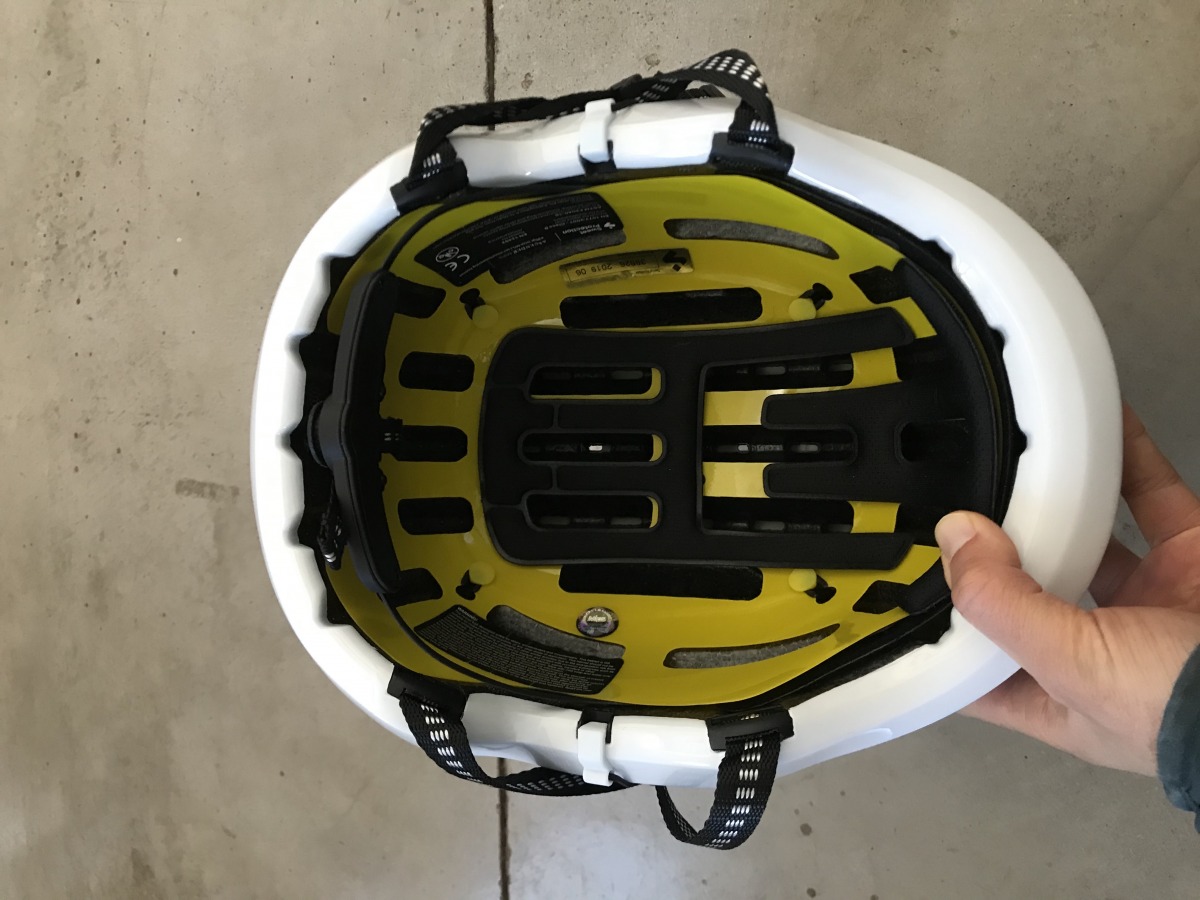
This particular model features MIPS (the Ascender is also available without). The yellow inner plastic is designed to reduce and slow brain rotation on impact in an effort to reduce causes of brain damage.
Protection aside, the helmet calls upon 108 penetration proof vents — rocks, sticks and other random objects will have a tough piercing these to cause acute trauma. The helmet also features internal vent channels and forehead ventilation. Three different vent systems equal mega breathability.
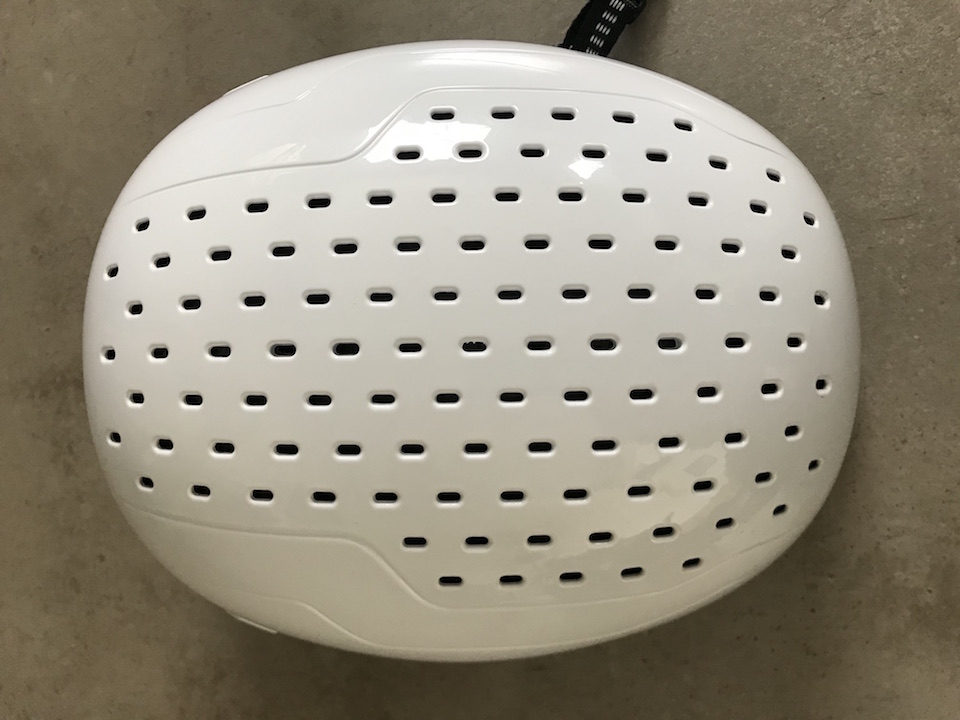
Vents for days, 108 of them to be exact. One of my favorite features of the helmet. And they look pretty cool.
Features aside, how does the helmet perform in the field? To test the multiple venting systems’ aspirations for mega breathability, I wore the helmet on a variety of uphill endeavors from high output training skins to backcountry slogs. I alternated between a folded buff and heavy wool beanie underneath. So far as I can tell on the website, earflaps aren’t an option to order with the helmet, though Sweet Protection does offer a merino beanie to buy separately.
Fit
I have this misfortune of a head that measures 56cm, the typical breaking point between small/medium and medium/large sizing. I opted for the larger size of the Ascender, with the thought I’d frequently if not always some sort of insulation underneath. The medium/large was workable, but a little big. I’d choose the smaller size on the next go round. (It’s also available in L/XL.)
Performance during ascending
The multifaceted venting systems worked impressively well while on high output days and slower backcountry tours. With the exception of very cold temps, I typically wear a buff as a headband while climbing. I didn’t notice a great difference in warmth with the helmet on over the buff, which I was surprised and pleased by. The 108 vents do their job well. I look forward to seeing how that assessment holds up during the warmer temps of spring missions.
One thing I did notice, however, is the extra grams on my head, a sensation I’d no doubt get used to with time. But on my initial uphills with it, my head felt a bit wobbly. Call me a lightweight, I guess.
Performance during descending
I’m happy to say I did not get the opportunity to fully experience how the triple certification handles impact. I can say the helmet was comfortable both during a few resort charging days and as well backcountry tours. I typically opted for the heavier wool beanie for resort days, but could get away with just the buff during backcountry laps.
Room for improvement
The plastic boa closure for tightening the helmet is quite small and difficult to manage with gloves. The plastic wiring also felt a little chinsy; it didn’t take much force to yank it out of place once while I was hurrying to get the helmet on.
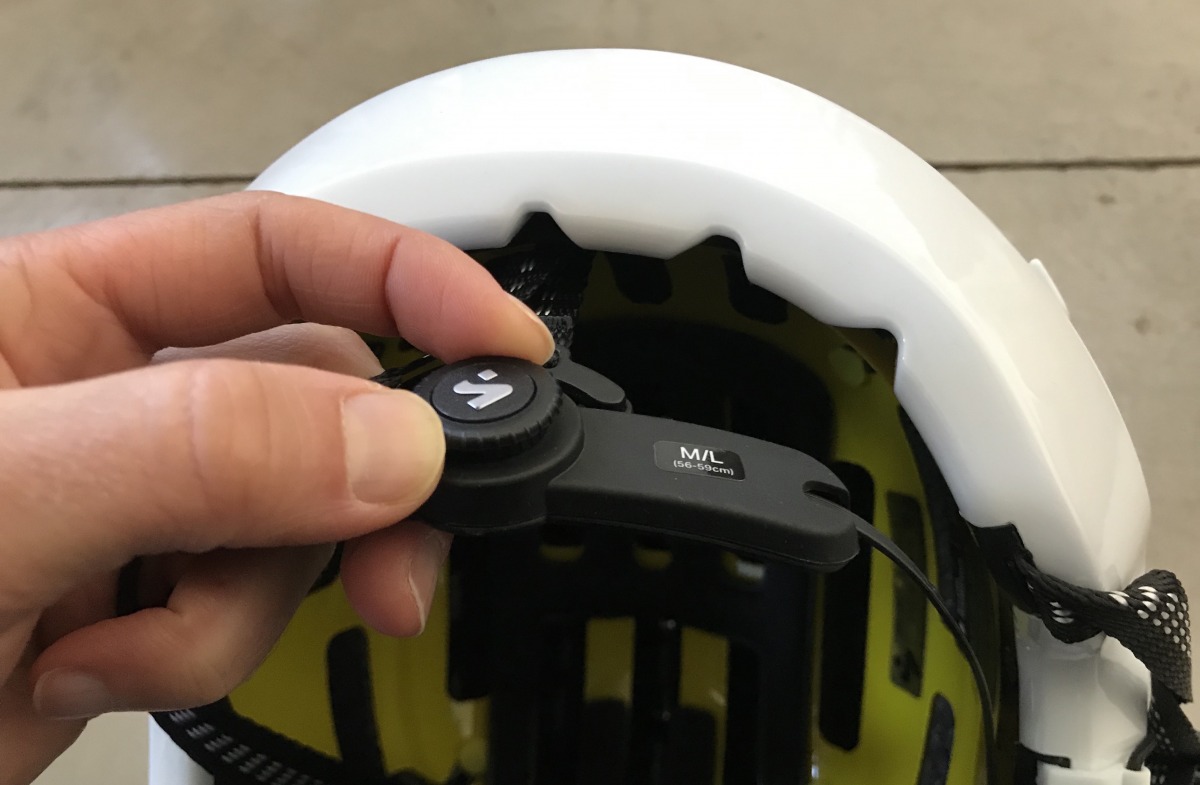
A small potential drawback of the helmet: this circular ratchet is a bit small to adjust with gloves on.
Other considerations
The Ascender fit just as well as any other helmet does in the carry on my pack. I chose the white option, though it’s also offered in black, blue and orange. I tied the get-up together with Sweet Protection Clockwork goggles, which are designed to work seamlessly with the helmet. More on them in a future post.
The company offers a nice crash protection program: if you bust it up in a crash within three years of buying, they’ll give you 40% off retail for a new one.
Conclusions
If you’re going don a helmet, it makes sense to choose one that offers as much protection as possible. I suspect real weight watchers will shy away from the Ascender for big days simply on the principle of staying as light as possible. But if maximum protection and versatility are your goal, the Ascender with MIPS is a worthy consideration.
Shop for it on Evo.
Manasseh Franklin is a writer, editor and big fan of walking uphill. She has an MFA in creative nonfiction and environment and natural resources from the University of Wyoming and especially enjoys writing about glaciers. Find her other work in Alpinist, Adventure Journal, Rock and Ice, Aspen Sojourner, AFAR, Trail Runner and Western Confluence.
